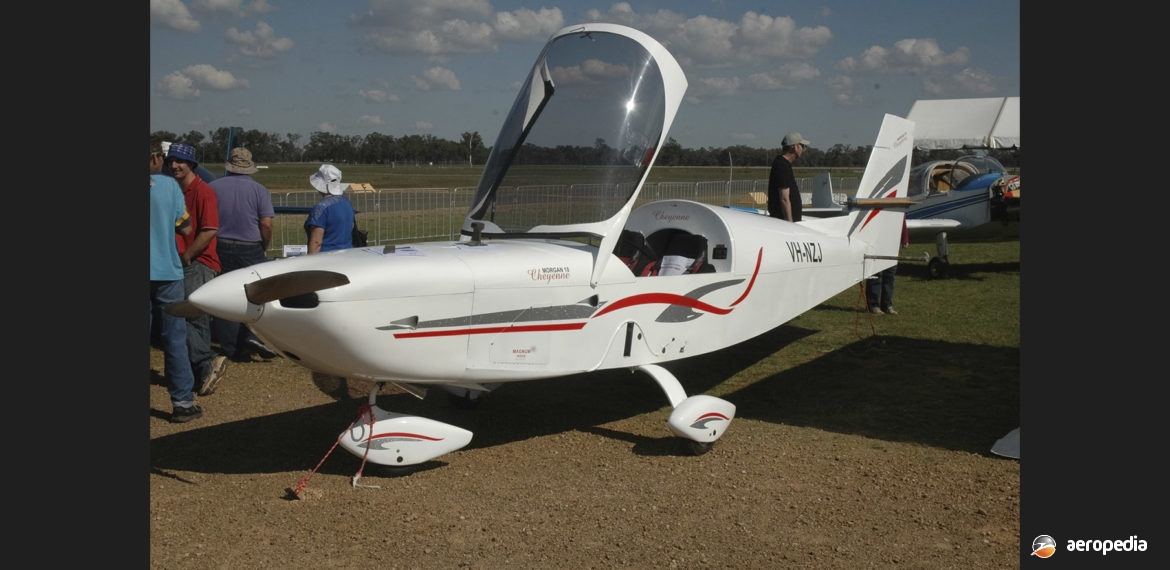Photograph:
The prototype Morgan Cheyenne VH-NZJ (c/n GFA/AB/150) on display at Temora, NSW in April 2014 (P J Ricketts)
Country of origin:
Australia
Description:
Two-seat self-launched glider / light sporting aircraft
Power Plant:
One 60 kw (80 hp) Jabiru 2200 four-cylinder horizontally-opposed air-cooled engine
Specifications:
- Wingspan: 18 m (59 ft)
- Cruising speed: 167 km/h (104 mph)
- Fuel capacity: 100 litres (22 Imp gals)
- Wing loading: 34 to 42 kg/sq m
- Empty weight: 405 kg (893 lb)
- Loaded weight: 700 kg (1,543 lb)
History:
The Cheyenne was the tenth design produced by Garry Morgan of Morgan Aeroworks of Taree, NSW and was a two-seat self-launched glider which could be used as a light sporting aircraft. It was powered by a Jabiru 2200 engine. It could be disassembled for storage or towing on a trailer, the outer wing panels joining the centre section 2.4 m (7 ft 8 in) from the fuselage. The prototype when completed weighed 410 kg (904 lb) but after some work it was reduced to the projected 405 kg (893 lb). Development of the aircraft continued through 2014 and it was expected to make its first flight late in 2014
The aircraft was able to carry two 110 kg (242 lb) people and was fitted with a ballistic parachute recovery system, Matco brakes, a transponder and a radio. In early 2017 Garry Morgan sold his business to an operator at Camden, NSW, Wedgetail Aircraft, and moved back to New Zealand, taking some of his equipment, including the prototype Cheyenne, which was registered in September 2017 as ZK-CZJ (c/n GFA/AB/150) to Garry Stephen Morgan of Renwick, NZ.
However, the aircraft was cancelled from the civil aircraft register in January 2018. On 31 December 2017 at 13.40 local time the aircraft was flying south of Blenheim, NZ over the Blairich Range when it suffered a catastrophic failure of a wing, causing it to spiral down about 457 metres before hitting the side of a steep slope. The aircraft was extensively damaged but the pilot and his passenger only received minor injuries. No further examples are known to have been built.

